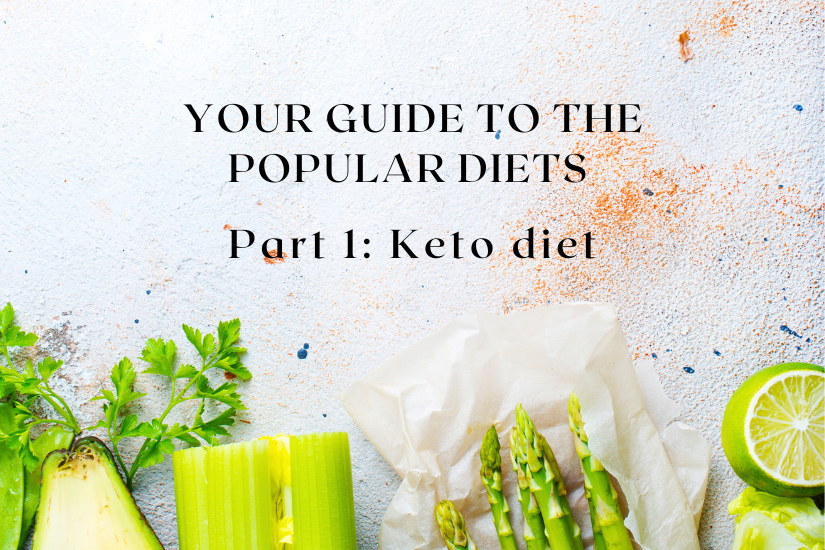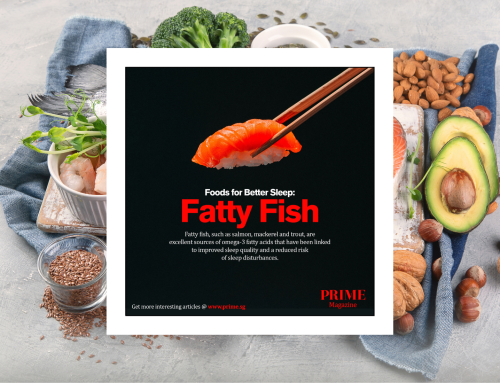Part 1: The Keto Diet

Glucose is the main fuel for our body. However, during starvation or scarcity of carbohydrate supply, the body’s glucose and glycogen reserve will be depleted and fats will start to burn as fuel. This condition produces ketones and is known as the state of ketosis.
Keto diet is a dietary pattern that aims to put the body in ketosis. In order to achieve real ketosis, the portion sizes of different food groups and the ratio of calories contributed by each macronutrient needs to be precise: Carbohydrate intake of not more than 20 to 30 g per day; fats intake making up 70% to 80% of total calories; and protein intake contributing around 15% to 20% of total calories. Without technical knowledge, keto diet can be challenging to meet.
What to eat in keto diet?
The limited carbohydrate amount is achieved by omitting all carbohydrate-containing foods like grains, fruits, legumes, tubers and other starchy vegetables, diary products, sugar and other nutritive sweeteners. The intake of non-starchy vegetables like spinach, lettuce, cucumber, broccoli and bok choy is limited to not more than 3 servings per day. The intake of slightly higher carb vegetables, like bell peppers and green beans, are restricted too. This may lead to intense craving and consequent lower compliance.
For a “healthier” keto diet, obtain fats from healthy plant sources like avocados, nuts, seeds, coconut and olive oil; ditch the unhealthy fats by choosing lean, unprocessed meat, fatty fishes while avoiding processed meat.
What are the benefits?
Significant weight, body fat and appetite reduction were frequently noted among those taking the keto diet. It is noteworthy that any diet that restricts entire food groups and limits dietary variety will reduce calorie intake and thus, induce weight loss. Satiety and reduction of appetite may be attributed to protein intake and ketones, respectively. The hunger-suppressing benefit may make the diet plan easier to comply with.
Some research has shown that keto diet may improve insulin sensitivity, glycaemic control and blood lipid profile among those with prediabetes, metabolic syndromes and type 2 diabetes.
What are the drawbacks?
Due to the elimination of several food groups, keto diet, like many other low-carb diets, is lacking in many essential nutrients which can be detrimental to health in the long run.
Glycogen holds fluids and sodium in the body. When the glycogen store is drastically exhausted, fluids and sodium will be drained rapidly too. This results in a collection of symptoms, like fatigue, dizziness and nausea that is known as keto flu. However, increasing salt intake by 1/4 teaspoon per day helps to alleviate the symptoms.
Keto diet burdens the kidney as there are loads of nitrogen for the kidney to remove during protein metabolism. In addition, long-term keto diet may reduce bone density as the bones try to maintain blood pH levels by releasing bone minerals. Abstinence from most diary products may further increase the risk of osteoporosis.
If you are keen to practise keto diet, do consult a trained professional who will advise you on the nutritional deficiencies and the necessary supplementations for the diet. Multivitamins, bone-building nutrients (calcium, vitamin D, vitamin K, magnesium, etc.), fibre and probiotics are among the fundamental supplements that you should consider.
Written by:
Caleb Mok
caleb@healthpro.com.sg
Health Products & Consulting Pte Ltd.










